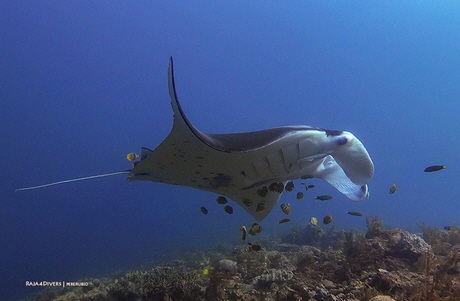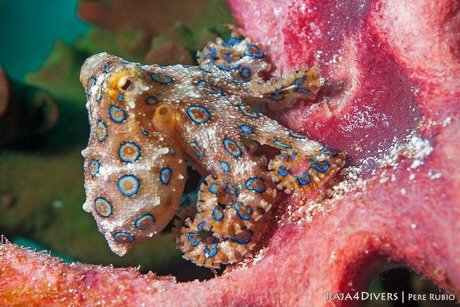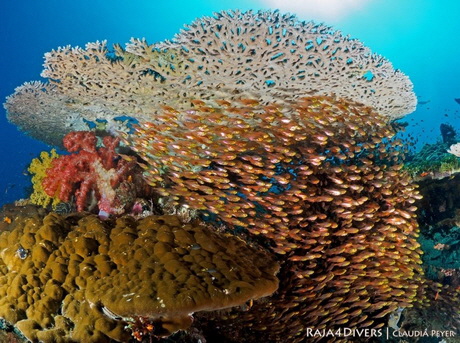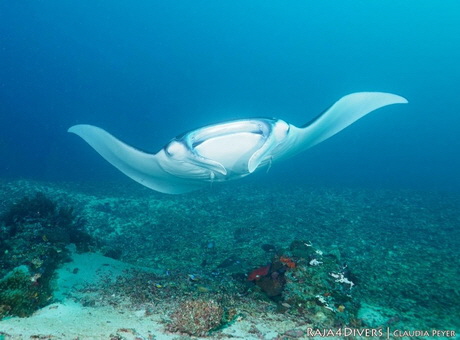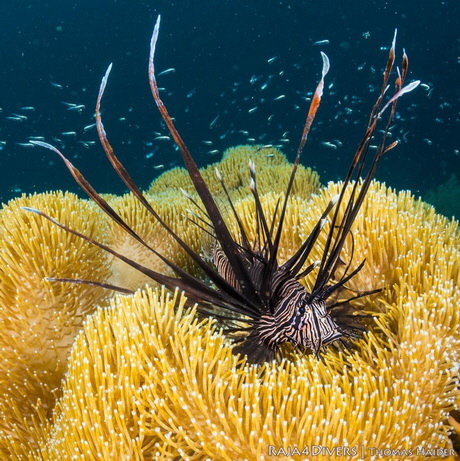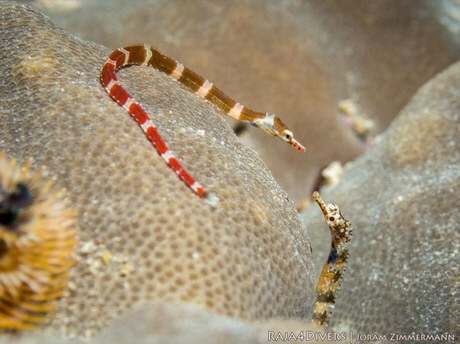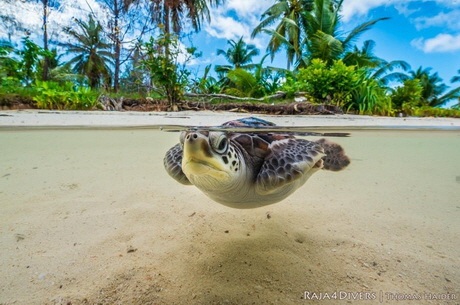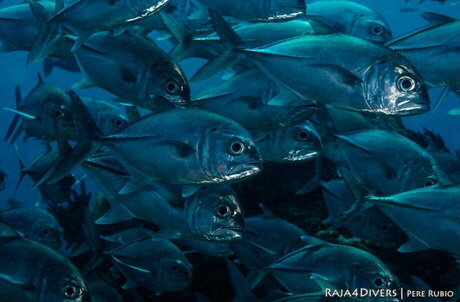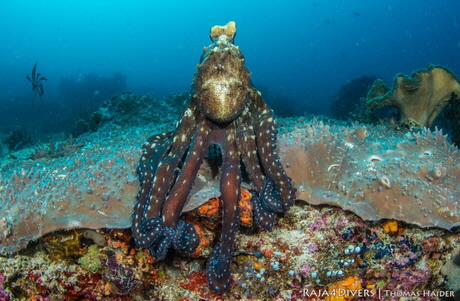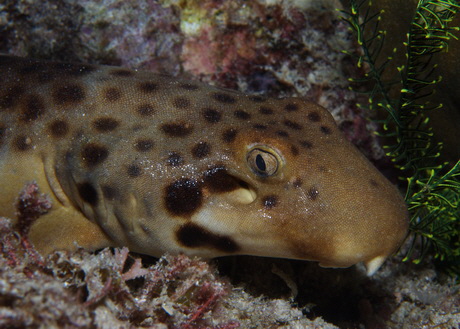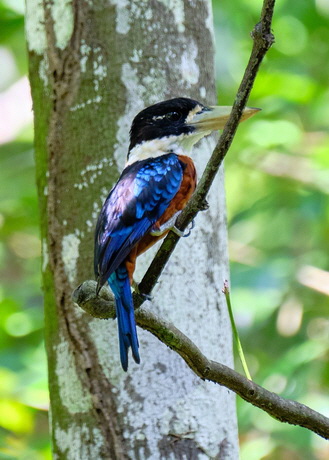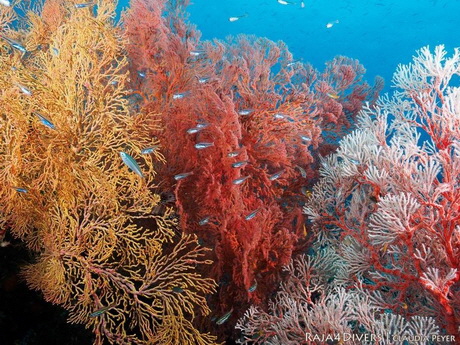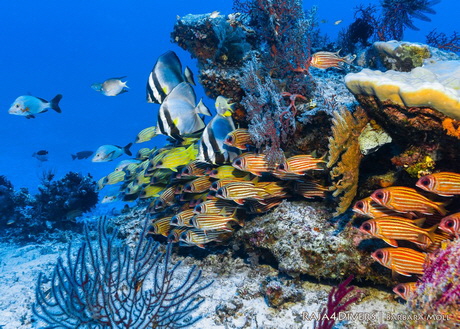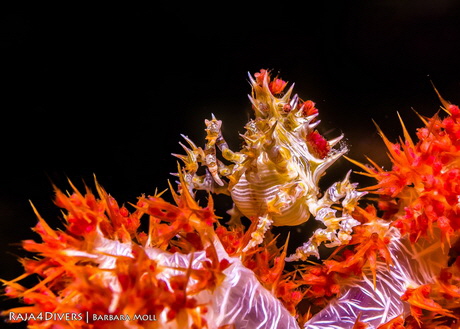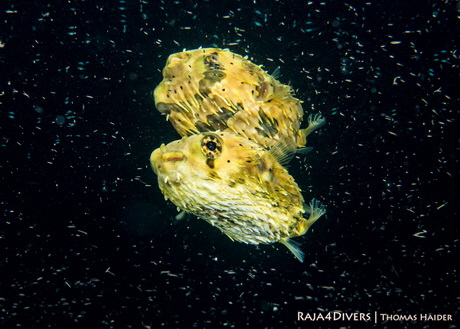
Raja4Divers
|
Datum |
Bild / Film |
Fotograf |
Kommentar |
|---|---|---|---|
|
06.04.2022 |
|
|
Re-opening: Endlich können wir mit unseren Gästen wieder unbeschwerte Momente auf Pulau Pef erleben, die einmalige Natur Raja Ampats über und unter Wasser geniessen, lachen, singen, tanzen... und einfach zusammen eine gute Zeit verbringen. Nähere Details findest Du auf der Homepage: Raja4Divers - Raja4Divers - Home
|
|
25.10.2021 |
Update Oktober 2021 |
|
|
|
2021 |
Bericht Coop-Zeitung |
|
|
|
25.10.2021 |
|
Raja4Divers |
Buntes Leben am Hausriff Korallen, Schwämme und Algen wachsen, vermehren sich und zeigen sich in allen Farben. Künstlich angelegte Riffe spriessen, und das Raja4Divers-Logo entwickelt sich von einem blanken Stahlmodell zu einer üppigen Form. Die von unserem Künstler Pak Busro erstellten Figuren haben inzwischen farbenfrohe Outfits bekommen und einige sogar eine wilde Haarpracht. |
|
03.10.2021 |
|
Pere Rubio |
Manta Ray A manta ray sighting is one of the most breathtaking experiences a diver can have. Watching such an enormous creature glide through the water with such grace and effortlessness, it’s easy to fall under the manta’s spell. It’s thought that their brain structure, unique among fish, might help to explain mantas social and curious natures. They’ll return over and over again to cleaning stations to have smaller fishes, like wrasses and sergeant major fish, clean them of parasites |
|
26.08.2021 |
|
Pere Rubio |
Blue-Ringed Octopus |
|
11.08.2021 |
|
Claudia Peyer |
Breathtaking Reefs |
|
30.07.2021 |
|
Claudia Peyer |
Manta Ray |
|
14.07.2021 |
|
Thomas Haider |
Lionfish |
|
07.07.2021 |
|
Joram Zimmermann |
The banded pipefish or ringed pipefish (Dunckerocampus dactyliophorus) |
|
01.07.2021 |
|
Thomas Haider |
Sea turtles are majestic creatures in the sea and there is no more magical place to see them than Raja Ampat. |
|
23.06.2021 |
|
Pere Rubio |
Jack Fish School |
|
16.06.2021 |
|
Thomas Haider |
Octopuses typically drop down on their prey from above and, using powerful suctions that line their arms, pull the animal into their mouth. The octopus performs its famous backward swim by blasting water through a muscular tube on the body called a siphon. Octopuses also crawl along the ocean’s floor, tucking their arms into small openings to search for food. Seals, whales, and large fish prey on octopuses. |
|
05.06.2021 |
|
Elmar Jünger |
Der Epaulettenhai gehört zur Familie der Bambushaie, lebt nur in den tropischen Gewässern um Indonesien, Neuguinea und Australien und ist nachtaktiv. Er hält sich meist in seichten Gewässern oder in Gezeitentümpeln auf. Mit etwas Glück kann man ihn bei Nachttauchgängen am Hausriff oder sogar vom Restaurant aus entdecken. |
|
02.06.2021 |
|
@hizu.wizu |
This species of kookaburra is widely distributed through the forests of lowland New Guinea. |
|
28.05.2021 |
|
Claudia Peyer |
Spring is in full bloom in many areas of the world and nature is showing its most beautiful side. |
|
18.05.2021 |
@hizu.wizu |
Zurück in die Steinzeit. Dieses prächtige Urtier überraschte uns kürzlich mit seinem Besuch auf Pulauf Pef. Weisst du, dass die Kokosnusskrabbe oder auch Palmdieb genannt, zur Familie der Einsiedlerkrebse gehört?
|
|
|
12.05.2021 |
|
Barbara Moll |
Raja Ampat - home of the world's richest reefs |
|
06.05.2021 |
|
Barbara Moll |
A very colorful crab that grows up to 2 cm (0.8 in) and lives on various species of soft coral. |
|
04.05.2021 |
|
Thomas Haider |
Porcupine Fish are short and broad-bodied, with large eyes, beaklike teeth, and skins set with spines, hence the name. |
|
02.05.2021 |
|
Raja4Divers |
Physical distancing Pef style! Our bungalows are well spaced apart and very airy due to their traditional construction with high ceilings and lots of open spaces. Picture yourself on a lounge chair on one of these terraces and enjoy your Sunday! |
.







